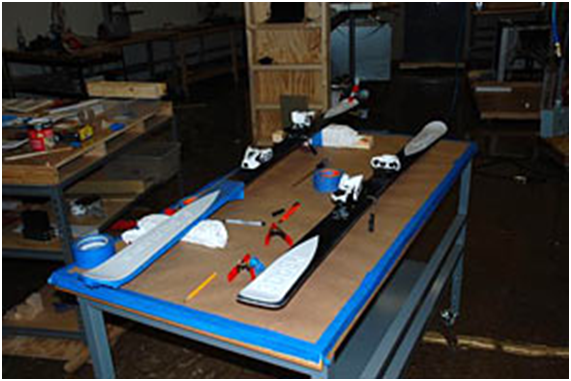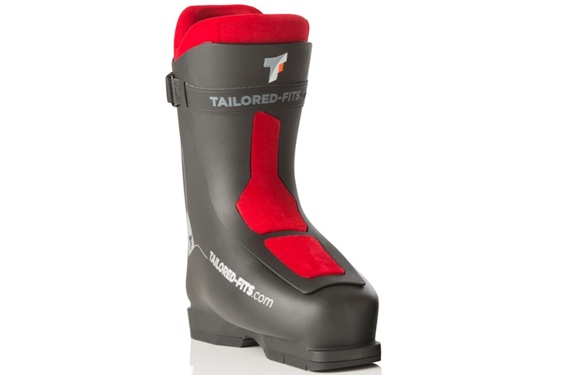
Charles R. Goulding and Peter Favata take a look at the sporty side of 3D printing with a focus on skiing.
Skiing is one of the most popular sports in the United States today with 14.94 million people participating every year. Given its popularity, it’s no surprise that the ski tourism industry contributes about $20 billion to the U.S economy each year. Skiing offers beautiful mountains with breathtaking views while 5,000-10,000 feet above sea level. With the concerns of Covid-19 people are looking for new activities where they can get outside and practice social distancing while still having fun, and skiing can be one of those activities.
Downhill Skis
Stratasys has proven that it is possible to 3D print sturdy performance-oriented downhill skis. The skis were designed using CAD software to make sure they would be lightweight but also sturdy enough to handle the stress of going down a mountain. To accomplish this, the Stratasys team used a semi-hollow triangle fill structure that provides sturdy support without making one solid piece. The skis were also printed as two sections, the tips and tails. These would then be joined together using an overnight bonding process. The skis are then mounded with bindings and ready to go.
Ski Boots
Tailored Fits is a Switzerland-based company specializing in producing the perfect custom ski boots using 3D printing. The boots are made by first conducting an exact scan of the skier’s foot to create a model that is uploaded into CAD software to create an inner layer that can slide into the outer shell of the boot. With the custom fit inner layer, the boot much more comfortable. This is because, unlike normal ski boots that have straps creating pressure points on the foot, the 3D printed boots are molded to the foot, eliminating the need for straps. Being that it is a mold of your lower leg the boots are described as a replica of your lower leg, which allows for the transfer of power to the skis much better.

Manufactures and designers utilizing 3D printing in the ski industry may be eligible for R&D Tax Credits.
The Research & Development Tax Credit
Whether it’s used for creating and testing prototypes or for final production, 3D printing is a great indicator that R&D Credit eligible activities are taking place. Companies implementing this technology at any point should consider taking advantage of R&D Tax Credits.
Enacted in 1981, the now permanent Federal Research and Development (R&D) Tax Credit allows a credit that typically ranges from 4%-7% of eligible spending for new and improved products and processes. Qualified research must meet the following four criteria:
- Must be technological in nature
- Must be a component of the taxpayer’s business
- Must represent R&D in the experimental sense and generally includes all such costs related to the development or improvement of a product or process
- Must eliminate uncertainty through a process of experimentation that considers one or more alternatives
Eligible costs include US employee wages, cost of supplies consumed in the R&D process, cost of pre-production testing, US contract research expenses, and certain costs associated with developing a patent.
On December 18, 2015, President Obama signed the PATH Act, making the R&D Tax Credit permanent. Since 2016, the R&D credit can be used to offset Alternative Minimum Tax (AMT) or companies with revenue below $50MM and, startup businesses can obtain up to $250,000 per year in cash rebates that can be applied directly to payroll taxes.
Conclusion
Skiing has been one of the most popular winter sports for many years. Not only is it a great cardiovascular exercise, but it also provides an opportunity to travel to a local mountain or other parts of the U.S. known for being excellent ski destinations such as Colorado, Utah, and Vermont. With the current state of the Covid-19 pandemic, it can be the perfect excuse to get out of the house for a change of scenery and a little fun while maintaining social distance. Hopefully, with advancements in 3D printing, the cost of skis and other equipment can be lowered so that more people can enjoy the sport.
